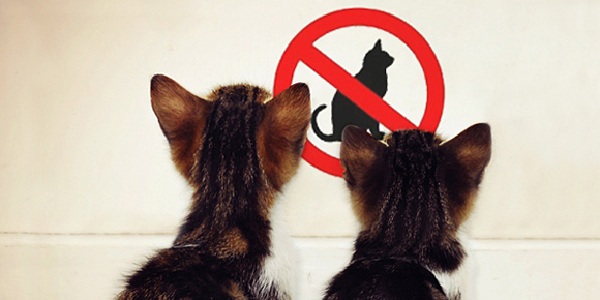A mobile strategy is not just for the dealership, it's for you too!
It ‘s no secret that smartphones have become a part of our daily lives. A part of everyones lives and when I say everyone, I mean EVERYONE! From Seniors citizens, to 1st graders. Everyone is rocking the smartphone.
I know what you dealer principals, GMs and other industry "big wigs" are saying…." We need to have a mobile strategy no shit " and your right at this stage in the game you better but what I am about to go into is not for you. This is for the automotive professional who is on the front line hopefully building his/her business.
Sales pros this is a step to running your own business. Being a entrepreneur, a Showroom Executive.
Mobile/Smartphone statistics
Mobile now accounts for 10% of internet usage worldwide (this has more than doubled over last 18months) (The Next Web)
• 1.08 of the world’s 4 billion mobile phones are smartphones
• Apple and Android represent more than 75% of the smartphone market
• 7.96% of all web traffic in the U.S. is mobile traffic. That number skyrockets to 14.85% in Africa, and 17.84% in Asia — up 192.5% since 2010
• 29% of mobile users are open to scanning a mobile tag to get coupons
• 39% of instances where a consumer walks out of a store without buying were influenced by smartphones
• 91% of mobile internet access is for social activities, versus just 79% on desktops (Source: Hubspot)
• Over 1/3 of Facebook’s users access Facebook Mobile; 50% of Twitter’s users use Twitter Mobile
• QR code scans increased 300% in 2011 compared to 2010
• The average tablet user spends 13.9 hours per week with the device
• 73% of smartphone owners access social networks through apps at least once per day (Source:Hubspot)
• There was 103% growth in website traffic from smartphones from 2011-2012
• US consumers spend almost 1 in every 10 e commerce dollars using a mobile device (Source:Hubspot)
• There are currently 6 Billion mobile subscribers worldwide
• This equals 87% of the world’s population
• China and India account for 30% of this growth
• There are over 1.2 Billion people accessing the web from their mobiles
• Over 300,000 apps have been developed in the past 3 year
• Google earns 2.5 Billion in mobile ad revenue annually (Source Digital Buzz Blog)
And that trend is even venturing over to car buying. People aren’t just using their phones to login to Facebook or check their emails.
EBay Motors, a division of eBay Inc., did a study of millennials, that’s young people, and found that more than a third used their mobile phone to help research pricing and other factors while on dealer black tops. That’s compared to 19% for other age categories.
So what does this have to do with being a Automotive Professional you might be asking?
Well people buy from people. These days you need to somehow get in front of your prospective buyer. There are a few ways to do that:
1.Advertise to get new prospects (Whether it be online, newspaper, etc.)
2.Keep a good relationship with existing customers to build repeat business.
3.To get existing customers to refer you to their friends, families, co-workers etc.
Now lets look at this.
The cheapest way of getting extra business is by building up a good relationship, providing great service and showing your customers that you care.
The question is how do you get in front of them. Well if you have done a good job of building your relationships then your existing customers will refer you to their friends.
How is this done? Usually they hand out a card or maybe its just word of mouth and the prospect is left to look up your number online.
Well what about this idea. Get a premium mobile friendly website. It will work on any phone, or device that can access the internet.
On your business card you hand out, have a QR code that someone can scan which then links them through to a video of you right their in your mobile website.
It can have tap– to-call. Tap-to-email. It can have a map of where the dealership is so they know how to find you.
It can be loaded with 100’s of photos of each customer you have ever sold a car too.
It can have video testimonials from existing customers telling prospects what it is like dealing with you and why they would recommend you.
It can have video walk arounds of you doing a review on a number of cars.
It can have a contact form so that people can send you there details and any comments.
They can share your mobile site to Facebook, Twitter and or email it to a friend. (Much better then sending a business card.)
It can have other photos albums of new cars with videos of those cars and all their specs.
The ideas are endless of what you can do with a mobile website.
When you think about it who doesn’t have a phone these days?
What younger generation person doesn’t have a phone these days. They are all over it with Facebook, Instagram, Twitter etc
That’s where you want to be. You want to be in front of their eyeballs.
Your premium mobile website is like an interactive business card. It’s your marketing tool that you can keep updating and getting circulated.
To see what a premium mobile website looks like check out mine at "http://m.yourhyundaiguy.com" http://m.yourhyundaiguy.com once you see that it will give some ideas and then with your own imagine added to it you will have the best marketing tool to crush it.
Not all mobile websites are the same just like not all cars are the same. With mobile you want something that is gong to work on all devices and is designed with the latest mobile technology.
Mobile is your next big move as a "Showroom Executive". If you do not already have your website up, you need to knock that out before you kick your mobile strategy in gear in my opinion.
Building brands and marketing strategies are very much a passion of mine so any automotive professionals reading AutoSuccess Magazine please feel free to contact me for a strategy session.
You can find me on the internet!
Robert Wiesman



























